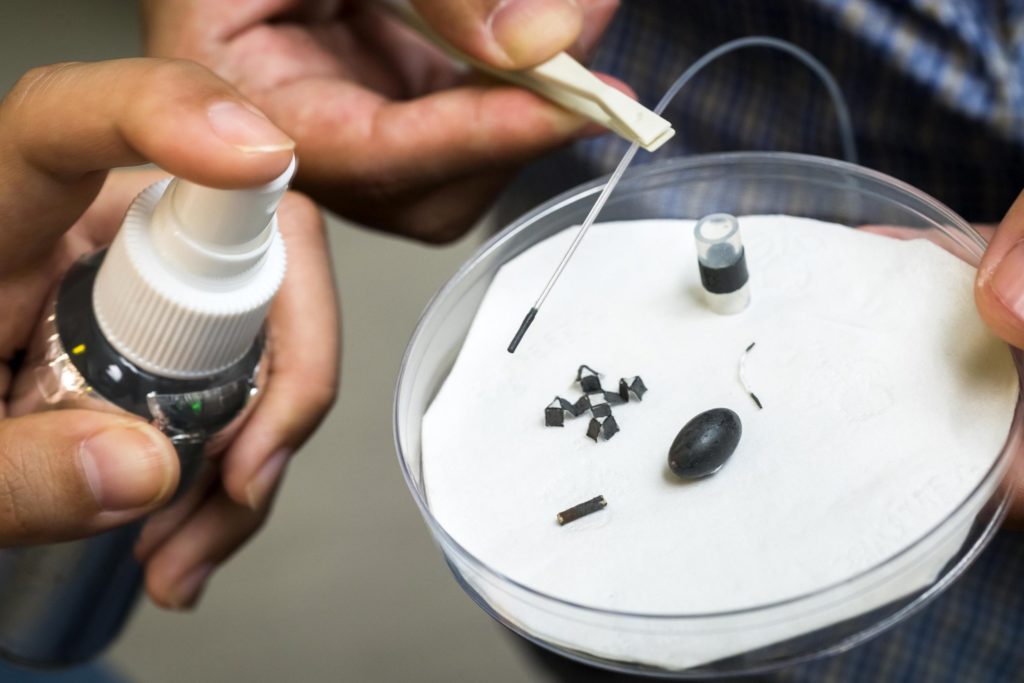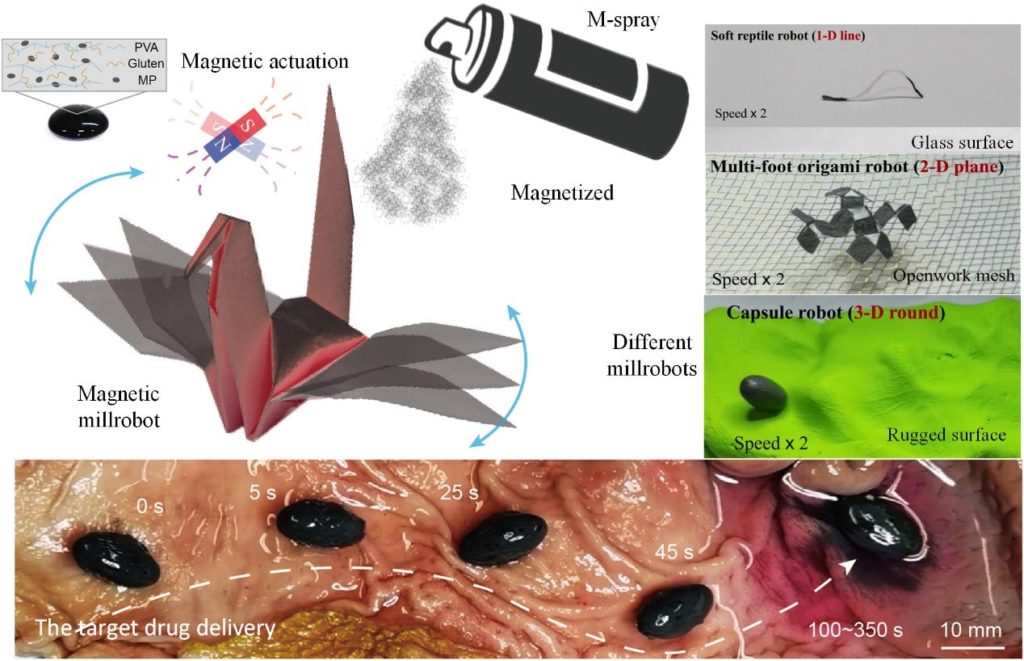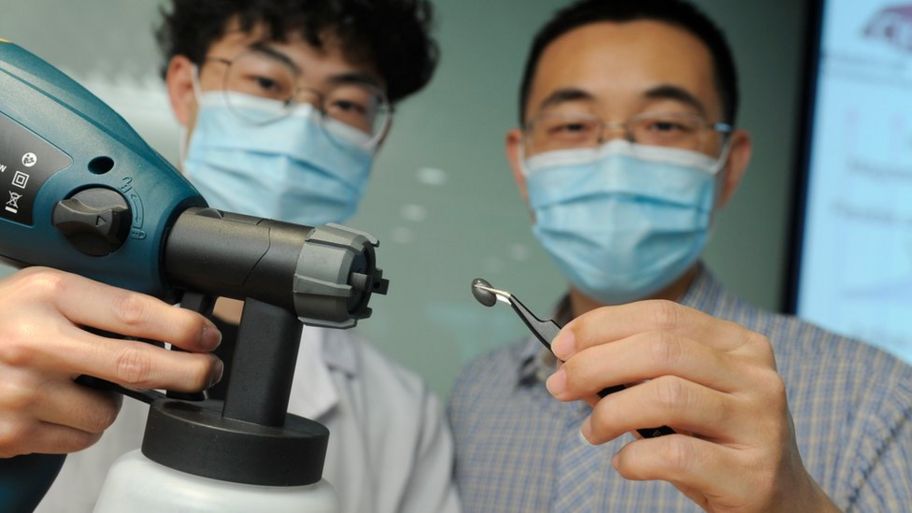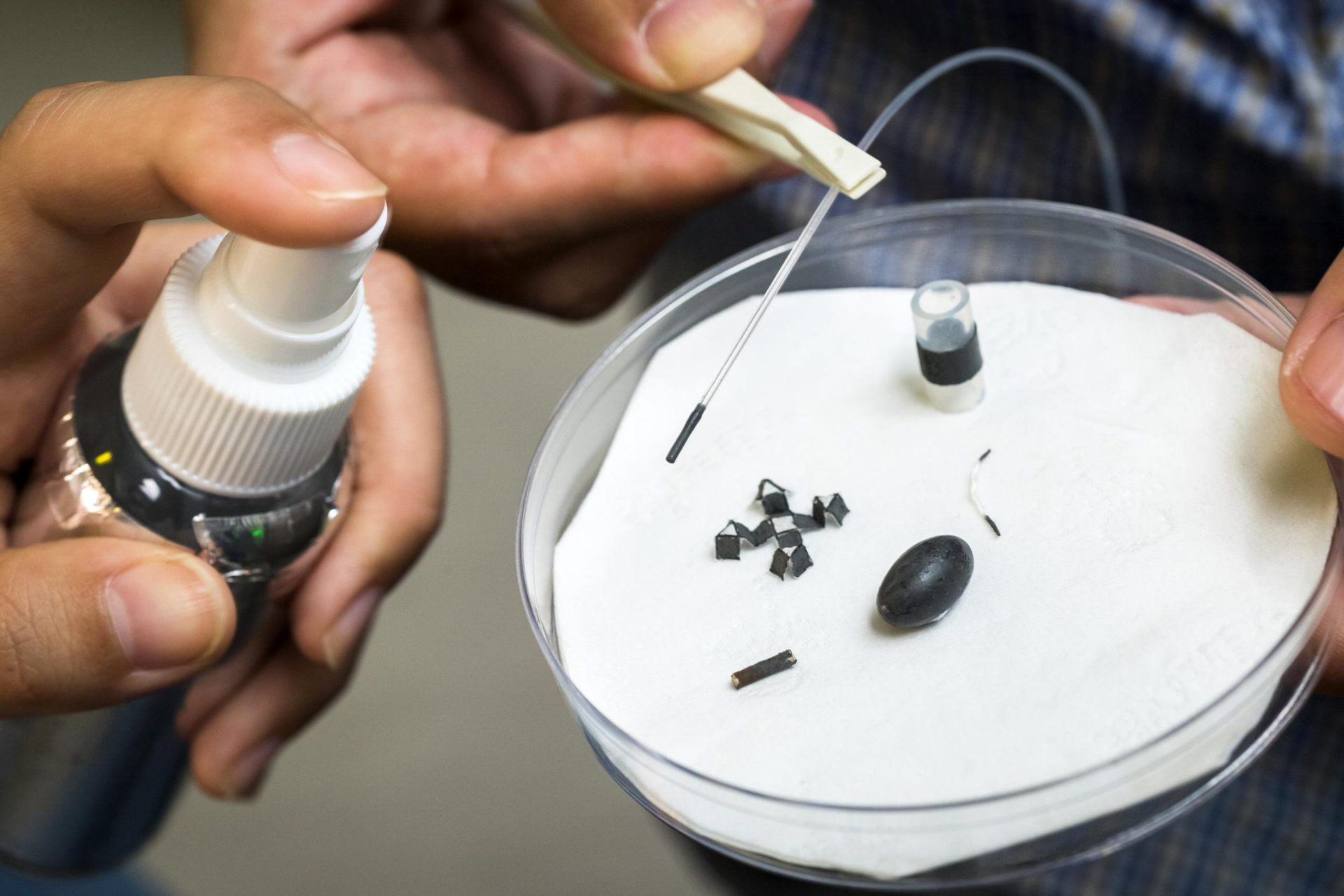The research findings have been published in Science Robotics in an article entitled “An agglutinate magnetic spray transforms inanimate objects into millirobots for biomedical applications.” The magnetic spray (M-spray) is mainly composited from polyvinyl alcohol (PVA), gluten and magnetic particles. The M-skin formed from the M-spray is reprogrammable by adjusting the easy magnetization direction without changing the main structure.

When the covered spray is thoroughly wetted, the spacing between magnetic particles increases due to PVA swelling, and the constraints on magnetic particles from the PVA and gluten are greatly decreased. As a result, the magnetic particles inside the spray can be realigned along the direction of magnetic flux and can overcome constraints when a strong magnetic field is applied.

Moreover, the M-spray can be disintegrated by increasing the kinetic energy of magnetic particles to overcome inner constraints. This is done by applying an oscillating magnetic field in an aqueous environment. This magnetically induced disintegration ensures the constructed millirobot can disintegrate on command.

The research also proved potential applications in the biomedical area, including the navigation ability of an M-spray-covered catheter in the narrow vascular model, the reprogramming of multipoint sampling cotton thread for various sets of steering, and a magnetic spray-covered capsule for active delivery. A rabbit stomach experiment demonstrated that a constructed capsule millirobot could effectively enhance the retention as well as the concentration of a drug in specific lesions.
Accoring to SciTechDaily














